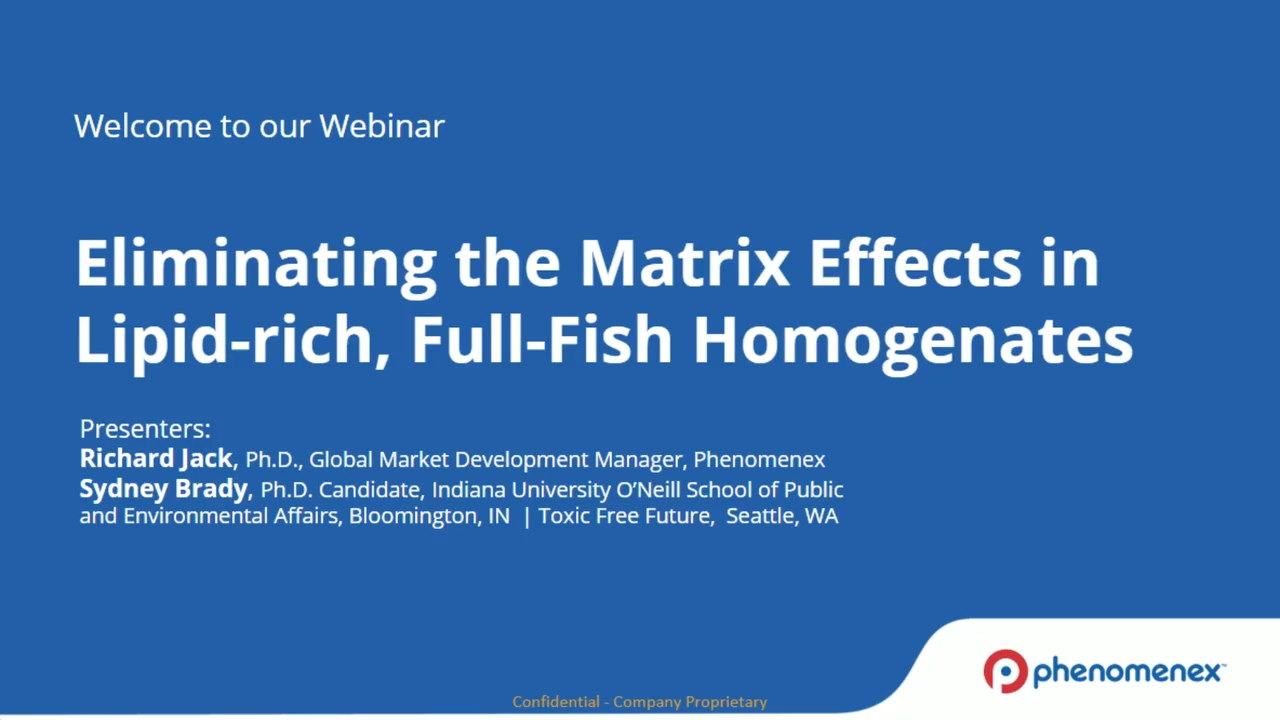

Extracting PFAS from dirty matrices is a challenging task. With the finalization of the EPA Method 1633 (Analysis of Per- and Polyfluoroalkyl Substances in Aqueous, Solid, Biosolids, and Tissue Samples by LC-MS/MS), the scientific community is closer to reaching that goal. However, the basic pH method in EPA 1633 is not suitable for some of the most complicated matrices, including lipid-rich, full-fish homogenates. Basic methods are lipid-limited and there is an increased likelihood of incomplete separation of PFAS due to significant matrix interferences. This poses a challenge for analyzing PFAS in whole fish (as opposed to fillets or organs) which can provide valuable information about both human and animal exposure through consumption.
In addition, many methods focus on the analysis of PFAS in fish fillets with the primary purpose of informing human consumption advisories. However, this is likely not representative of the PFAS burden consumed by aquatic predators, who generally eat most of the fish, if not all. Some internal organs, such as the liver, have higher concentrations of PFAS than the fillet. Analyzing the homogenate of a whole fish provides a holistic view of animal exposure through consumption, as well as exposure for the fish itself.
We developed an extraction method that can be used to analyze linear perfluorocarboxylic & perfluorosulfonic acids in lipid-rich, full-fish homogenates. Recoveries of PFCAs & PFSAs were between 73 and 104%, which is comparable, if not improved from, the acceptable range in EPA 1633. This method allowed us to analyze homogenized Pacific Herring and Chinook salmon samples. EPA Method 1633 was tested on these samples, but there was no recovery of target analytes. Using the method in this presentation, linear PFCAs were detected 54% of the time with an average concentration and SEM of 5.2±1.9 ng/g ww. Linear PFSAs were detected in 73% of samples with an average concentration of 1.6±0.2 ng/g ww. As with most other biological samples, the profile of linear PFSAs was predominantly PFOS, which had a detection frequency of 73% and an average concentration of 1.4±0.2 ng/g ww..
While this method does have trade-offs with EPA Method 1633, including a smaller amenable suite of analytes, it can be used to determine trophic magnification of PFAS more accurately. Additionally, this method can be used on banked fish samples that have been homogenized before storage, providing an opportunity for historical sample analysis.
- Understand the limitations of the basic pH method in EPA 1633 when analyzing lipid-rich, full-fish homogenates.
- Explore a new extraction method that can be used to analyze linear perfluorocarboxylic and perfluorosulfonic acids for a more efficient and accurate analysis.

Copyright © 2025 American Chemical Society | 1155 Sixteenth Street NW | Washington, DC 20036 | View our Privacy Policy